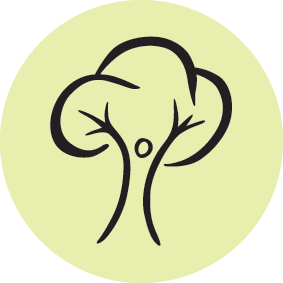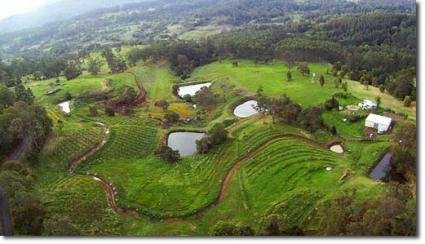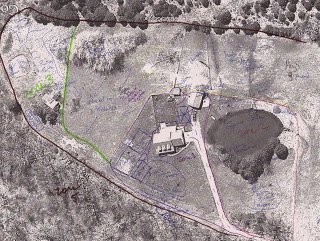Observe and Interact
"Good design depends on a free and harmonious relationship between nature and people, in which careful observation and thoughtful interaction provide the design inspiration." -David Holmgren

The first Permaculture principle is a foundation for all of the rest. In altering and adjusting the patterns of nature it is important to understand the patterns and attributes of the particular system you plan to work with. A Permaculture system is something that is always changing, therefore this principle is crucial because we must always take note of these changes and decide how to react to them. In doing this we can insure that we use any changes to benefit us, rather than work against us.
Using the Scientific method:
Because of this principle we can call Permaculture a design “science.” To observe and interact effectively it is helpful to remember the scientific method. The Scientific method is a long proven methodology for getting results from this concept.

- Ask a Question
- Do Background Research
- Construct a Hypothesis
- Test Your Hypothesis by Doing an Experiment
- Analyze Your Data and Draw a Conclusion
- Communicate Your Results
When intending to create a Permaculture system we must first, above all else, make careful observations to decide what we should alter. In a piece of land we observe the soil, its consistance and make up in different sections of our property, the water, how it flows across the property, the watershed it is sourced from, how much the land holds it in. The wind speeds and directions, sunlight angles and hours, shady areas, vegetation types, forest stages, wildlife activity, and just about anything else you could possibly observe in a landscape.
###Example: a scientific approach to design
I might make the observation that a lot of erosion is taking place in stream banks, and along other areas of water flow. Because this is something I want to prevent I ask myself what is creating that pattern. In heavy rainfall I notice that the stream fills up quickly, runs swiftly through my property, and resides rather quickly after the rain ceases. I ask myself again what is causing that swift and destructive cycle to take place.
After observing this cycle and its effects on the landscape I create a hypothesis. If I am able to slow down as much water as possible I could potentially ease the pressure on the stream banks and surrounding soil. So I create several ponds in the ravines that flow into the stream as well as some swales on contour to connect them.

Over the course of the next few months I begin to notice that during rainfall the water in the stream isn't rising as high and moving as swiftly, greatly reducing the erosion on the banks.
Continuing observations I see that the water level isn't dropping as drastically between rainfalls anymore. Now, not only do I know that slowing the water-flow down will decrease erosion, but I can also make a new hypothesis, that by slowing down the water I am also allowing it to infiltrate the water table. If this hypothesis is correct then I should theoretically be able to make dry springs start running again, or even create new ones.
The example of water breaks and infiltration above is something often used in permaculture designs, but it gives good insight to how observation and interaction plays a critical role in our developments of a landscape. The same method can be applied to any observation you make. It's important to remember that the Observation and Interaction is a continuous cycle, we must always observe our results and make new observations.
Patience is key:
taking note of observations for base map
Often times Permaculture people will become too anxious about the design process and forget to make very careful observations. This can result in placing certain systems in where another probably should have been resulting in a loss in potential and sometimes even destructive results. It is good practice to push all designing out of your mind during the observation process and the creation of base maps.

Every system should be considered in all of it's functions before anything is to be interacted with, usually each system effects another in some way. We must start looking at an ecology as a whole system made up of several different parts. That being said it is often the case where one might observe, analyze, theorize and plan so much that they never interact much at all. It should still be remembered that this is a two part principle and that each are equally important. Paralysis by analysis should be avoided.
I am the author and administrator of "Gard n' the yard" this has been poted there as well. Verified here
Great article! Keep bringing the permaculture content